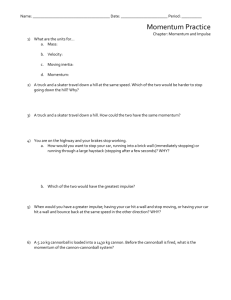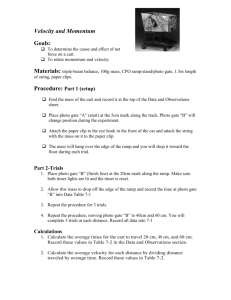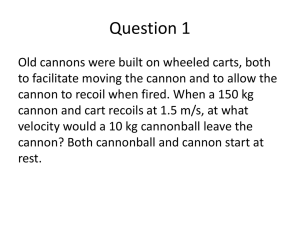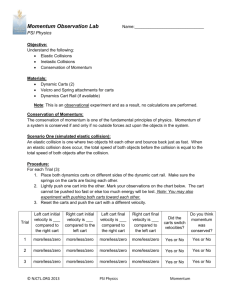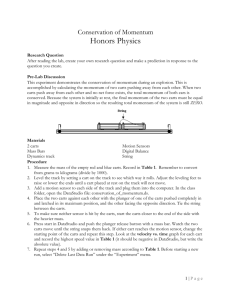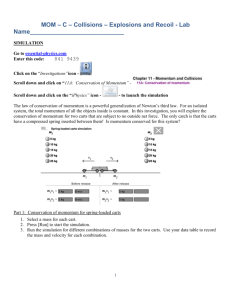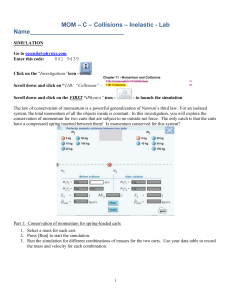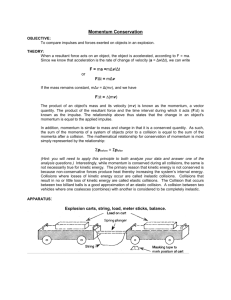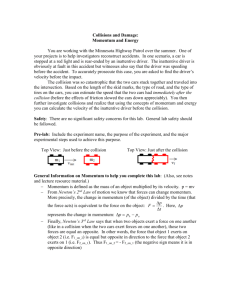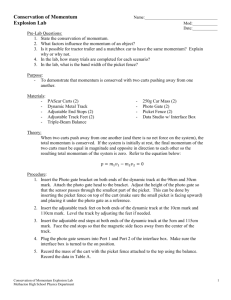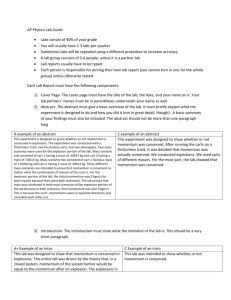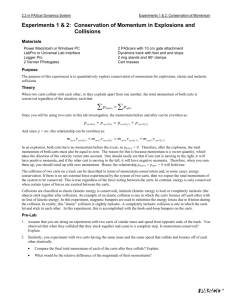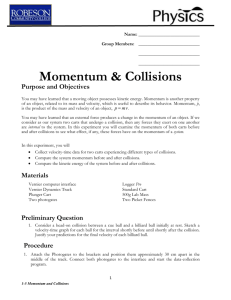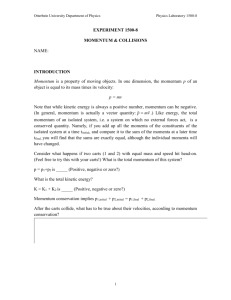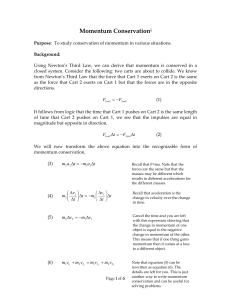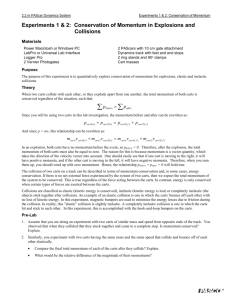CONSERVATION OF MOMENTUM
advertisement
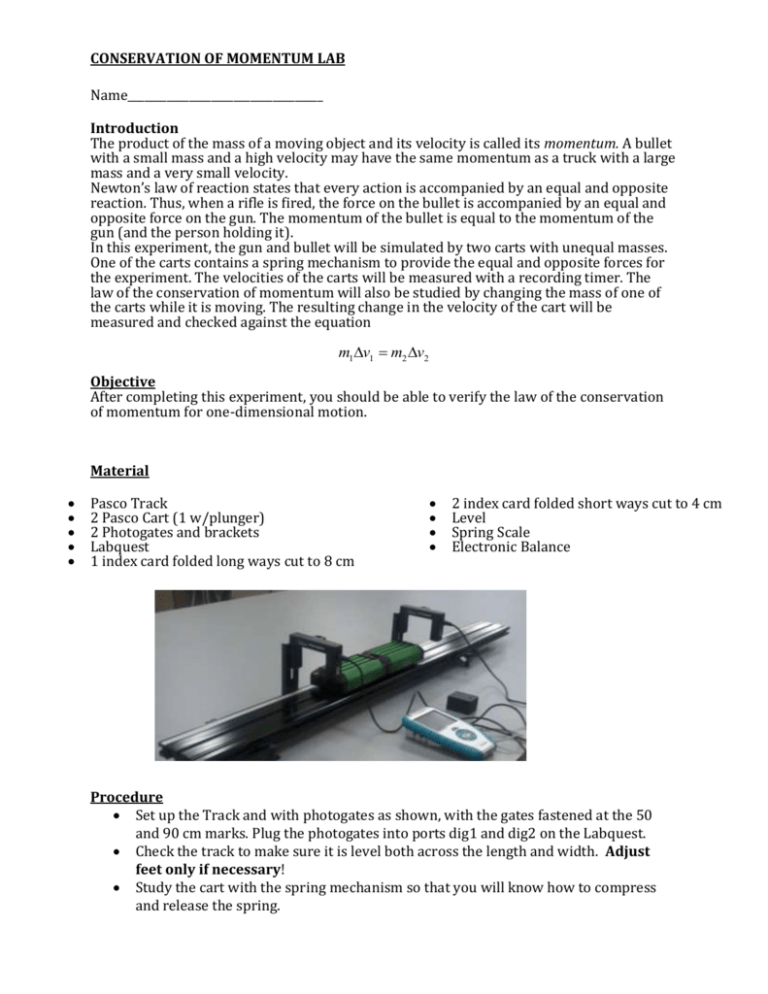
CONSERVATION OF MOMENTUM LAB Name___________________________________ Introduction The product of the mass of a moving object and its velocity is called its momentum. A bullet with a small mass and a high velocity may have the same momentum as a truck with a large mass and a very small velocity. Newton’s law of reaction states that every action is accompanied by an equal and opposite reaction. Thus, when a rifle is fired, the force on the bullet is accompanied by an equal and opposite force on the gun. The momentum of the bullet is equal to the momentum of the gun (and the person holding it). In this experiment, the gun and bullet will be simulated by two carts with unequal masses. One of the carts contains a spring mechanism to provide the equal and opposite forces for the experiment. The velocities of the carts will be measured with a recording timer. The law of the conservation of momentum will also be studied by changing the mass of one of the carts while it is moving. The resulting change in the velocity of the cart will be measured and checked against the equation m1v1 m2 v2 Objective After completing this experiment, you should be able to verify the law of the conservation of momentum for one-dimensional motion. Material Pasco Track 2 Pasco Cart (1 w/plunger) 2 Photogates and brackets Labquest 1 index card folded long ways cut to 8 cm 2 index card folded short ways cut to 4 cm Level Spring Scale Electronic Balance Procedure Set up the Track and with photogates as shown, with the gates fastened at the 50 and 90 cm marks. Plug the photogates into ports dig1 and dig2 on the Labquest. Check the track to make sure it is level both across the length and width. Adjust feet only if necessary! Study the cart with the spring mechanism so that you will know how to compress and release the spring. Procedure (continued) Determine the mass of an unloaded cart and record. Also determine the mass of each of the flat masses. Compress the spring mechanism and position the carts. Make sure there are no obstructions in the paths of the carts. Place a short index card on each cart. Turn on the Labquest and make sure you know which gate is attached to which port. In the menu go to sensor, and then data collection. Make sure that the first box is set for “photogate timing.” The second box should be set to “Gate.” Enter the length of the card as 0.04 m. Press Ok. Trial 1 When ready, press play on the Labquest and then activate the spring mechanism. Record the velocity of each cart, remembering to determine which direction is positive and which is negative. Trial 2 For trial 2, go back into the data collection menu and change the length of the card to 0.08 m. Place the long card on one cart and the short card and a mass on the other. Make sure that the short side of the mass is facing you. Now rerun the experiment and record your data. Trial 3 Now remove the short card and add a second mass in its place on the cart. Make sure the masses are touching and laying with the short sides facing you. Now rerun the experiment and record your data. Data Table Trial Mass Ma (kg) Mb (kg) Velocity Va (m/s) Vb (m/s) 1 2 3 Calculations Find the total velocity by adding the velocities of the two carts. Remember to include the direction of each cart. Calculate the momentum of each cart by multiplying its mass by its velocity. Add the momentum of the two carts to find the total momentum. Calculations Table Trial Total Velocity VA+VB (m/s) 1 Momentum mava (kgm/s) mbvb (kgm/s) Total Momentum mava+ mbvb (kgm/s) 2 3 Questions 1. Is velocity conserved in this experiment? Substantiate your answer with data from the experiment. 2. On the basis of your data, is momentum conserved in the experiment? 3. What is the relationship between the momentum of the carts before and after the spring is released?
